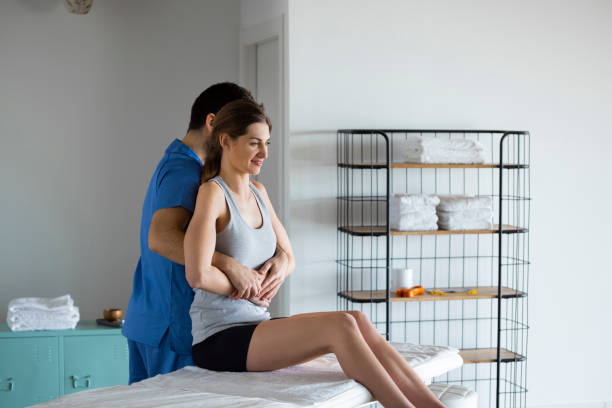Have you ever wondered how fast the best swimmers in the World swim? The UK F-Team has you covered.
The UK F team comprises athletes sponsored by Funkita and Funky Trunks Swimwear. Aimee Willmott, Molly Renshaw, and Max Litchfield were just some prominent GB athletes this brand sponsored. These guys are experts and have shared their best tips for swimming fast.
Try not to look down too much when swimming freestyle. Look at a 45-degree angle out in front to improve your body. – Ellie Faulkner (Double Olympian)
It is essential to learn how to time the butterfly. Drilling the big kick and little kick helps with timing your breath. The more you can time your breath, the easier it will be to perform. Tain Bruce, Scottish Record Holder
It is essential to rotate when swimming backstroke and freestyle. Rotation is important, but not too much, as it will slow you down. The closer you get to a 90-degree angle, the more water you can catch and press with each arm pull. – Aimee Wilmott (Olympic Finalist).
Hurrying up the breathing stroke is easy, but this doesn’t mean you will swim faster. Keep the glide phase in place at the end of each stroke to maximize the power of your kick. Molly Renshaw, Olympic Finalist
Don’t over-stress yourself, especially during competitions. You can swim faster if you are relaxed. – Abbie Wood (European Junior Gold Medalist)
Stay relaxed and focused when racing. Let the race flow, and trust the training that you’ve done. – Max Litchfield (4000 IM Commonwealth Record Holder).
The F-Team has answered some of the questions you asked.
HOW MUCH OF BEING AN OLYMPIC SWIMMER IS BASED ON YOUR GENETICS (WING SPAN/HAND SIZE ETC..) AND HOW MUCH IS BASED ON TRAINING?
It’s impossible to say what genes make good swimmers if you look at the F Team as a whole group of swimmers. Fly swimmers tend to have longer torsos and shorter legs, but this is not a rule. Only by training hard can you become an Olympian. It is only possible to achieve the highest level in elite sports with hard training. Start working hard if you want to be an Olympian as a child.
I SWAM COMPETITIVELY AS A YOUNGER PERSON AND WOULD LIKE TO RETURN TO IT FOR STAMINA AND FITNESS. How about I get back into it, other than just going to the pool and swimming as much as I can each time?
To help me regain my water sense, I would begin by doing a lot of kicking, pulling, and drilling work. Use fins if you have them. Then you can add meters to your total by adding increments each time. Before you know it, you’ll be back to full speed!
What exercises can I do outside the pool to improve my swimming?
All four strokes require you to use your gluteal, quadriceps, triceps, and lat muscles. Most swimming gyms include squats, presses-ups, pull-ups, and dips. You can do them easily as they are easy to perform. Start by using your body weight, and increase the load as you become stronger.
Strengthening the core muscles of swimmers is also essential for good body alignment.
What’s the best way to stop cramps in my legs on a 1900M plus swim? ON IM70.3, YOU DON’T GET A WARM-UP IN THE WATER
Add a pinch to your water bottle to reduce cramps. It’s not tasty, but it acts as a buffer for lactate to reduce cramps.
Try a quick warm-up on land before diving in. This will ensure that your muscles are ready and firing.
What training aids are best to use in order to help you swim faster?
The upper and lower body can be strengthened by kicking and pulling. It can be detrimental to your swimming speed if you are weak in one part of the body. You can do 8-10×50 on each side and try to improve in 2 blocks. Record your times and repeat this set every week to track improvement.
What age would you recommend we start looking into this for him?
You can never be too young to learn how to swim, but you shouldn’t force yourself to compete too soon. As a child, I loved being in the pool and swimming with my friends. I began racing at team events with my swimming club around 8/9 but I only did a few galas before I was 9/10. Aimee Wilmott
What foods would you recommend eating before and after your swim?
Fueling correctly is essential to achieving the best results in training and racing. A small meal with slow-release carbohydrates is the best way to begin any swim session. Porridge or a small serving of rice, bread, or pasta could be a good choice. They release energy slowly so that you can fuel your entire swim session.
Within 20 minutes after training, a snack will help you replenish the energy you have just burned and repair the muscles you just worked. The UK F-Team suggests a homemade blueberry and banana muffin!
Which Swimming Stroke is the Fastest?
Freestyle swimming, or front crawl as some sometimes call it, is the fastest stroke at elite levels. It holds the quickest world record. You can swim faster because it’s more efficient.
In just a few weeks, many members of the UK F Team will be heading to Australia to compete in the Commonwealth Games.
Aimee Willmott, Molly Renshaw, and Abbie Wood, along with Emily Large, Jocelyn Ulyett, Jessica Jackson, Joe Litchfield, Jacob Peters, and Elliot Clogg, are all members of Team England.
Charlotte Atkinson, Team Isle of Man; Kathryn Greenslade, Team Wales; and Kathleen Dawson, Team Scotland.





